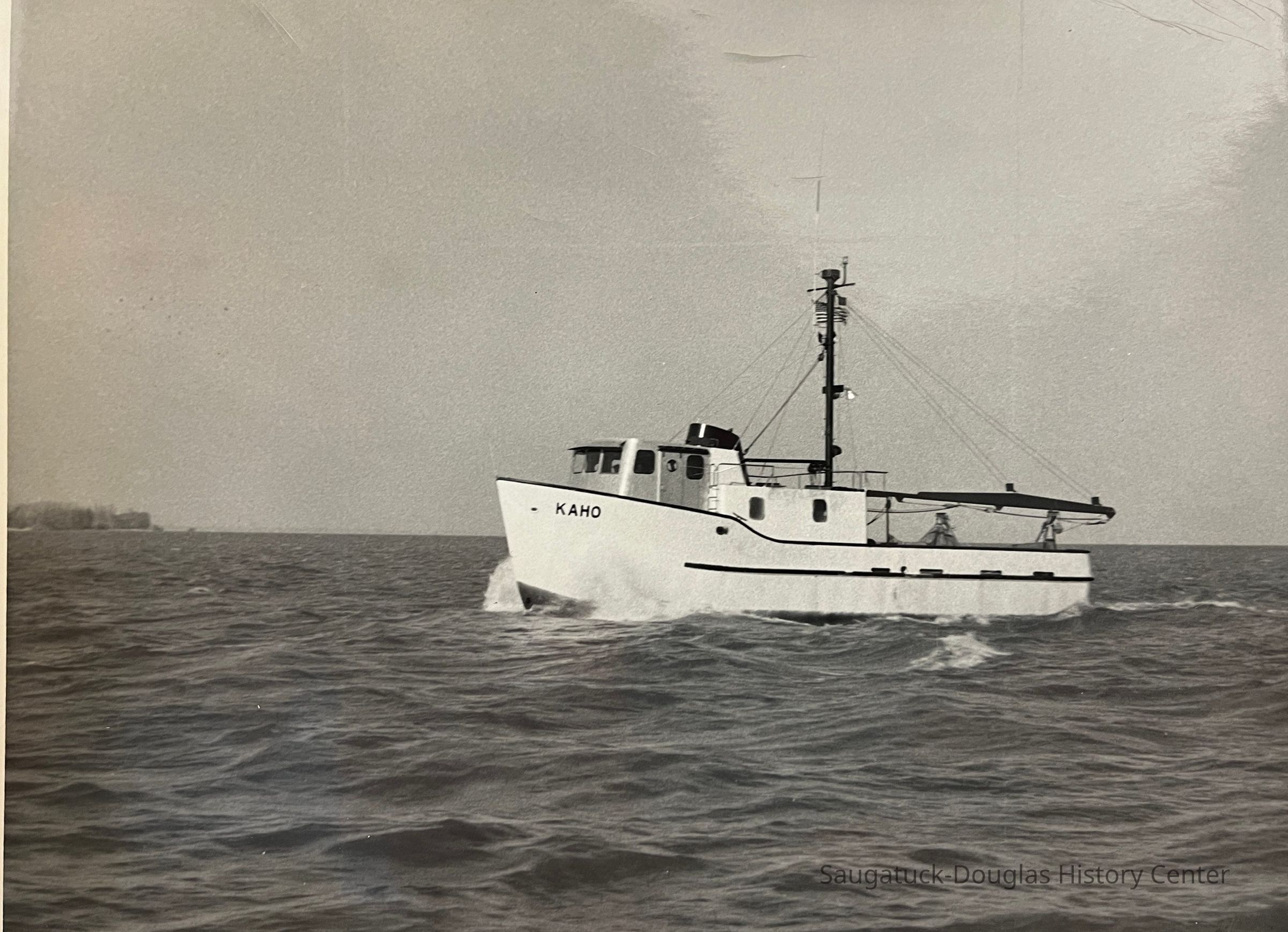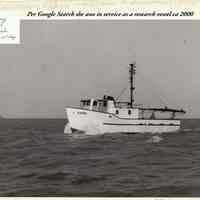US Exploratory Trawler - KAHO

2009.58.16
Print, photograph
Kaho (ship)
After Lake Michigan fish stocks collapsed, the Kaho was part of an effort by humans to turn to harvesting other species.
NauticalNature, ecology, the landscape1845 Fishing, commercial
Winters, Bill and Kathy
Simmons, William "Bill" R. 1890/1-1966
8 in
10 in
100 Commercial Fishing
Very Good
OCR scan of attached article about the Kaho from THE COMMERCIAL RECORD, FRIDAY, NOVEMBER 9, 1962 U. S. HEADS RESEARCH IN RESTORING GREAT LAKES COMMERCIAL FISHING This is the first of a series telling of the exploratory work of the U.S. Bureau of Commercial Fisheries and its trawlers, Kaho and Cisco, based in Saugatuck. An urgent need for more efficient means of harvesting Great Lakes fish has developed in recent years. Fishing traditional gear (gill nets, trap nets, and pound nets) was practical when the bulk of commercial catches consisted of relatively high-value species such as: Lake trout, whitefish, walleye and yellow perch. Extreme alterations in the species composition of Great Lakes fish populations, resulting from environmental changes and the invasion of the notorious sea lamprey, has occurred during the past few years. Biologists are of the opinion that the Lakes are populated with perhaps more fish, numberwise and poundwise, than ever before. However, since the species comprising these exploding populations have less market value and as a rule are small, it is no longer practical to catch them with traditional Great Lakes fishing gear. The Ann Arbor Base Great numbers of firms and individuals have abandoned the Great Lakes fishing business in recent years. The problem of locating and determining effective ways for harvesting these large, but low value, fish stocks has received priority attention from the Exploratory Fishing and Gear Research Base established in Ann Arbor in 1958. The Ann Arbor Exploratory Fishing and Gear Research Base is one of five scattered strategically around the country in the states of Alaska, Massachusetts, Michigan, Mississippi, and Washington. It is unique in being situated in a non-commercial-fishing community; but not more unique than it’s area of responsibility which includes: all five of the Great Lakes as well as rivers, reservoirs, other inland lakes, and even rice-field ponds located in various parts of the 18-state region. Outline of Work The Ann Arbor location provides a convenient center for directing field operations throughout this large area, and is a local point of Great Lakes and other fresh-water fisheries research. The prime objective of the unit is to help attain the utmost sustained utilization of latent aquatic resources of the Great Lakes and other inland waters. This includes efforts to develop and integrate more modern and efficient harvesting methods into the fresh-water commercial fisheries to enable commercial fishermen to compete effectively in today’s highly-technical economy. This objective is accomplished through programs of exploratory fishing, fishing gear research, and technical assistance to the fishing industry. (Next week the article will deal with exploratory fishing and fishing gear research.)
01/11/2010
01/12/2025




